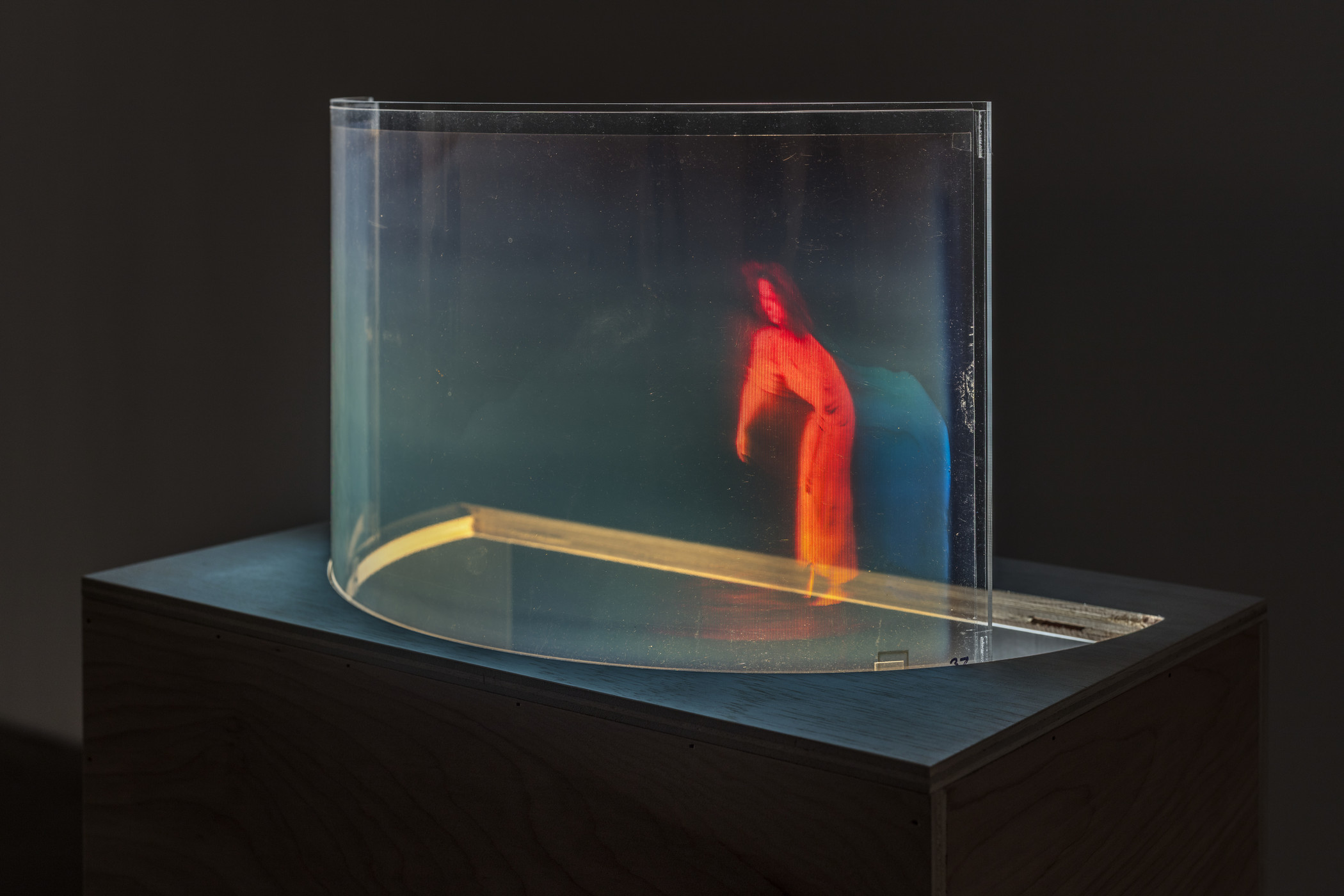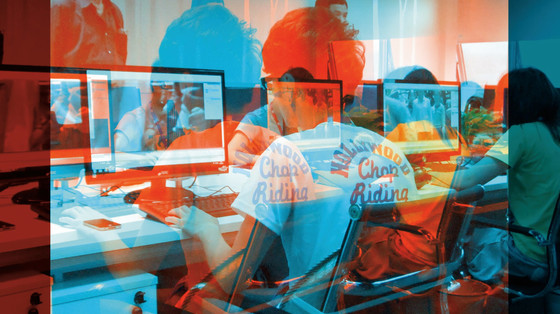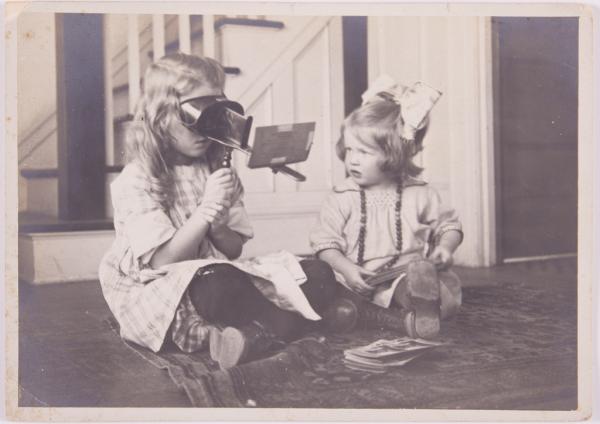Opening on July 15, 3D: Double Vision is the first American exhibition to survey a full range of artworks, dating from 1838 to the present, that produce the illusion of three dimensions. The quest for perfect 3D representation drives innovations, stimulates creative expression, and sparks wonder in generation after generation, and is reflected in objects drawn from the realms of art, science, mass culture, and entertainment. I spoke with Britt Salvesen, Curator and Head of the Wallis Annenberg Photography Department and the Prints and Drawings Department, to learn more about the show.

Tell us about your approach in curating this exhibition.
To experience 3D is to engage with questions about the nature of perception, the allure of illusionism, and our relationship with the technologies that create such images. The artworks in 3D: Double Vision function by activating binocular vision—the process by which our brains synthesize the information received by our two eyes into a single, volumetric image. To me, it’s magical to realize that what we perceive as solid objects are actually virtual images. One can argue that all art is an investigation of perception; 3D art in particular involves the spectator in that process. It requires effort, but it’s also empowering. I think the art in the exhibition will dazzle the eyes and provoke the imagination.
I also wanted to make the point that exciting 3D innovation has occurred in different areas of our society, from popular culture to experimental laboratory contexts to the high-art realm. That led to inclusions of things like View-Master reels, computer animation, and contemporary installations, respectively.

Those touch on so many different specialties! Did you have experts advising you throughout the process?
Personal interactions were crucial to the research. Over some five years, I benefited from the expertise and generosity of so many collectors and 3D enthusiasts. There is so much amazing 3D material out there—I hope this exhibition, which is only the tip of the iceberg, will lead to many more explorations of specific topics and technologies. I am grateful for the assistance of helpful individuals in the LA 3-D Club, the National Steroscopic Association, the Museum of Jurassic Technology, Christie Digital Systems, RealD, Stereo D, and many others. All the artists were incredibly helpful, sharing years of experience with the challenge of making and displaying 3D art.
_0.png)
Let’s go back to the beginning. What was the genesis for the show?
I have been thinking about 3D for a long time. At the University of Chicago, in the 1990s, I wrote my doctoral dissertation on Victorian stereoscopy. For many years, I didn’t consider it to be a viable exhibition subject, owing to the small scale of many of the works and the challenges of providing optical apparatuses for museum visitors. When I started working at LACMA in 2009, I realized I was now in a city that was producing the new wave of 3D technology, and at a museum that foregrounds film and art/technology collaborations. It seemed like the right place and time to present a wide-ranging survey of 3D media from its origins in the 1830s to the present.

You mention LACMA’s Art and Technology project (1968–71). Did that inform your thinking of the subject?
Yes, I was inspired by the legacy of that historic Art and Technology project, which included several 3D proposals and projects. More recently, LACMA has presented several exhibitions and installations by artists interrogating perception (James Turrell, Diana Thater, Random International, Alejandro González Iñárritu). I also see this exhibition as a successor to the exhibition I curated in 2013, See the Light—Photography, Perception, Cognition: The Marjorie and Leonard Vernon Collection, which explored connections between the history of photography and the history of vision science.
3D: Double Vision is vast in scope—what were some of the challenges to designing the exhibition space?
Designing a show like this is completely different from installing a selection of framed photographs. From the beginning, I knew the exhibition’s success would depend on carefully designed galleries and impeccably functioning audio-visual equipment. To those ends, I’m grateful for my LACMA colleagues: senior exhibition designer Martin Sztyk, gallery media manager Patrick Heilman, and our intrepid technical consultant Jill Smolin, among many others.
The requirements of gallery display helped me narrow down my initial wish list and determine the layout. I had to make sure to include some works that don’t require 3D glasses or viewing apparatuses. We considered traffic flow, making sure to locate viewing apparatuses in places where they won’t cause bottlenecks. We also had to consider lighting requirements, especially for installations involving projections and holograms.
Can you talk about the accompanying book? It’s very playful—I was pleasantly surprised to discover that it comes with two different types of 3D viewers.
The range of media, disparity of scale, and chronological scope must have been a challenge for the book’s designer, David Karwan, but he rose to the occasion. Taking inspiration from the checklist and from various how-to manuals, he created a design that combines clarity with playfulness.
I’m particularly pleased with the illustrated timeline, compiled by Zach Rottman and designed by David to include text, quotations, and images. Here you can see the rise and fall of 3D at roughly generational intervals, and you can see how one 3D format might respond to another. For example, the Hollywood 3D feature films in the mid-1950s and mid-1980s sparked accompanying 3D comic book crazes.
What do you hope visitors will take away from the show?
Museum galleries are often quiet, staid places, but 3D tends to provoke exclamations of joy, leaning from side-to-side, and sharing nostalgic memories. I’m eager to see visitors interacting with the artworks with various glasses and apparatuses, and sharing their responses with their friends and fellow visitors.
3D: Double Vision is presented by Hyundai Motor Company and opens to the public on July 15. Member Previews are July 12–14. Not a member? Join now!




